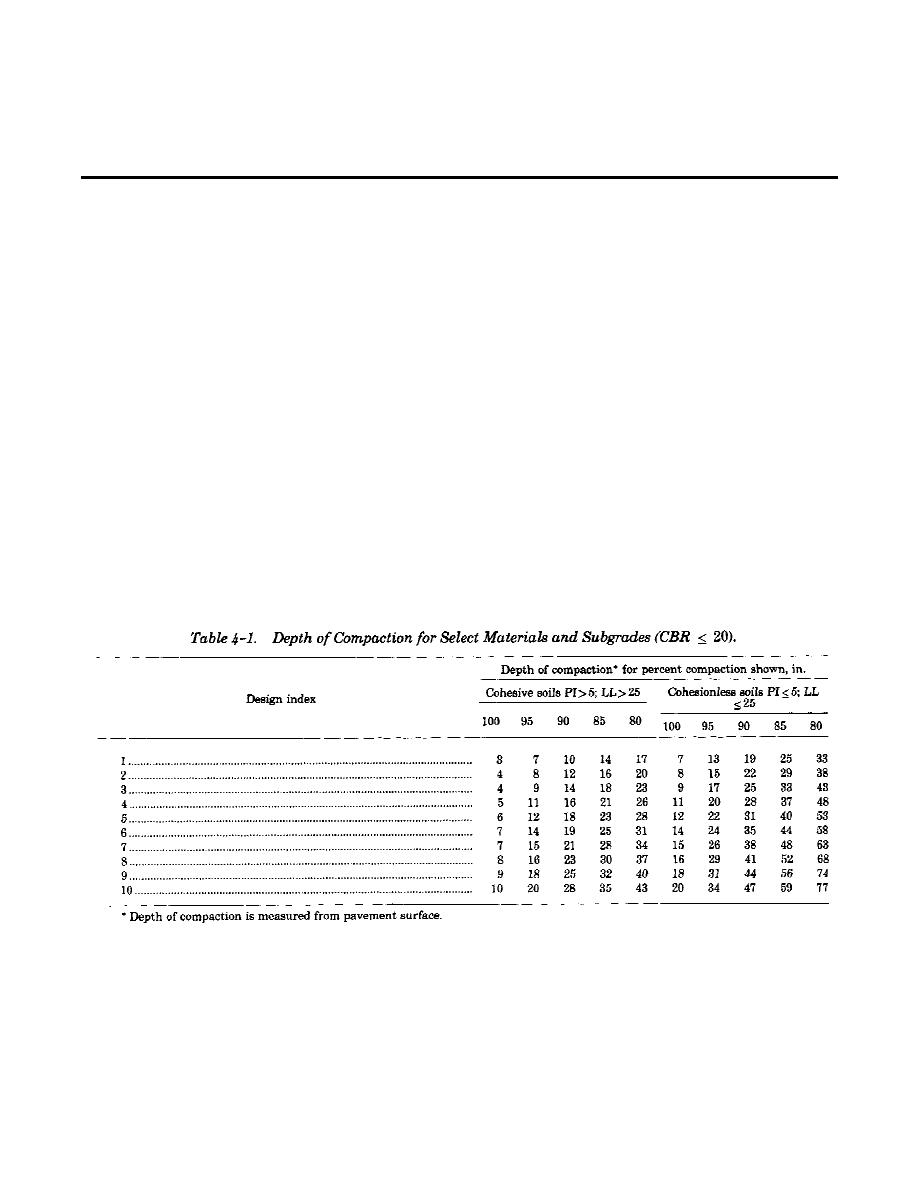
TM 5-822-5/AFM 88-7, Chap. 1
CHAPTER 4
FLEXIBLE PAVEMENT SUBGRADES
4-1. Factors To Be Considered.
4-2. Compaction.
The information obtained from the explorations and
The natural density of the subgrade must be suffi-
tests previously described should be adequate to
cient to resist densification under traffic or the
enable full consideration of all factors affecting the
subgrade must be compacted during construction
suitability of the subgrade and subsoil. The primary
to a depth where the natural density will resist
factors are as follows:
densification under traffic. Table 4-1 shows the
a. The general characteristics of the subgrade
depth, measured from the pavement surface, at
soils such as soil classification, limits, etc.
which a given percent compaction is required to
b. Depth to bed rock.
prevent densification under traffic. Subgrades in
c. Depth to water table (including perched water
cuts must have natural densities equal to or greater
table).
than the values shown in table 4-1. Where such is
d. The compaction that can be attained in the
not the case, the subgrade must be compacted from
subgrade and the adequacy of the existing density
the surface to meet the tabulated densities, or be
in the layers below the zone of compaction require-
removed and replaced in which case the
ments.
requirements for fills apply, or be covered with
e. The CBR that the compacted subgrade and
sufficient select material, subbase, and base so that
uncompacted subgrade will have under local envi-
the uncompacted subgrade is at a depth where the
ronmental conditions.
in-place densities are satisfactory. In fill areas,
f. The presence of weak of soft layers in the
cohesionless soils will be placed at no less than 95
sub- soil.
percent of ASTM D 1557 maximum density nor
g. Susceptibility to detrimental frost action.
cohesive fills at less than 90 percent 0 ASTM D
1557 maximum density.
12 inches below the pavement surface. Below this
4-3. Compaction Example.
depth, fill sections must be compacted to 95 percent
An example illustrating the application of sub-grade
maximum density throughout, and cut sections to
compaction requirements is as follows:
95 percent of maximum density to a depth of 22
a. Cohesion less subgrade. Assume a clean
inches below the pavement surface. The designer
cohesionless sand and a design CBR of 18, with a
must decide from previous experience or from test-
natural in-place density of 90 percent of maximum
section data whether or not these percentages of
density to beyond the depth of exploration of 6 feet.
compaction in cut sections can be obtained from the
From table 4-1 for a design index of 5, it is found
top of the subgrade. If they cannot, a part of the
that 100 percent density must extend to a depth of
subgrade must be removed, the underlying layer
4-1



 Previous Page
Previous Page
